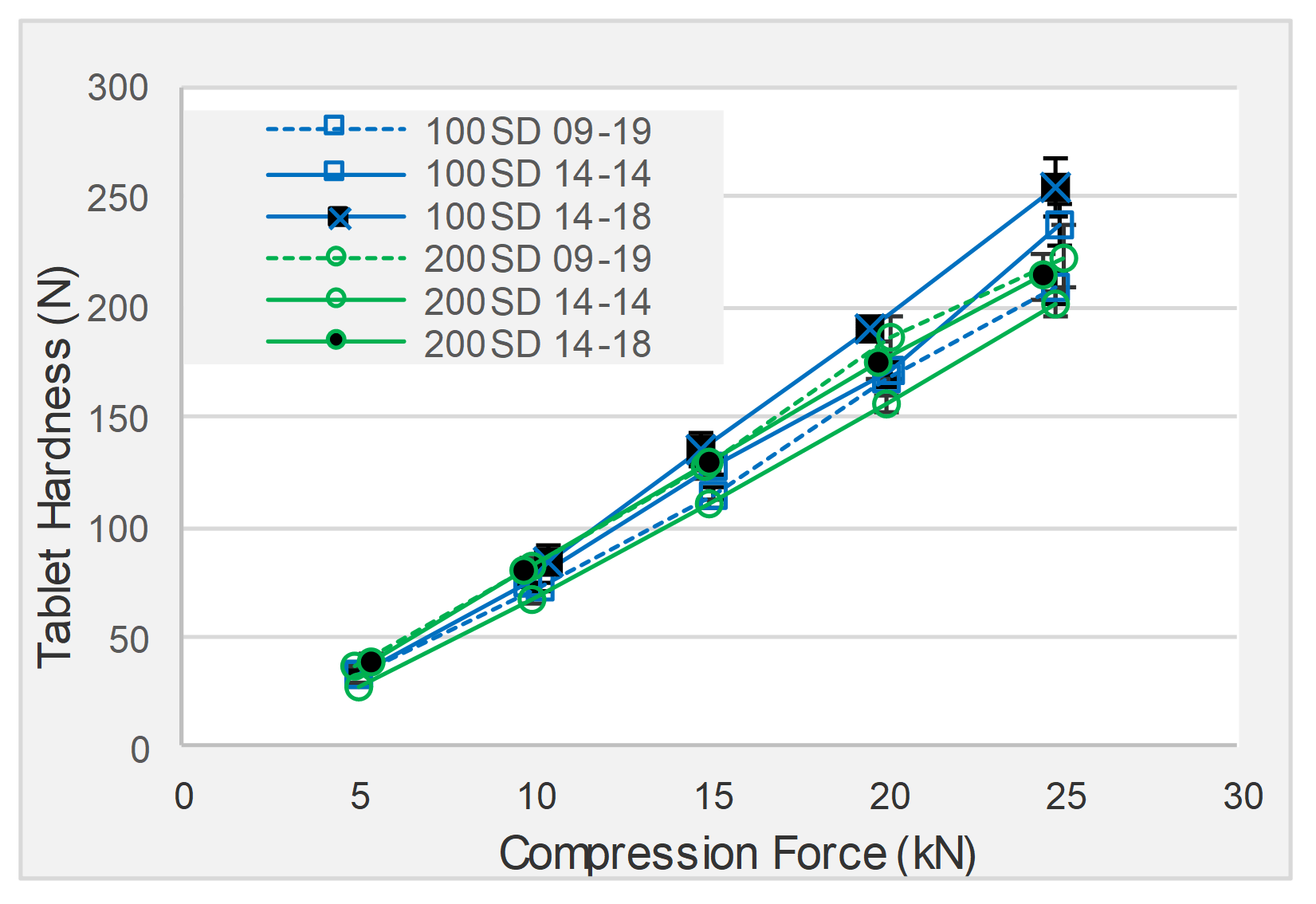Compaction Stability of Spray-Dried Mannitol’s containing α and β Crystalline Polymorphs
Situation
- Mannitol is the first intention excipient, designed for APIs having stability problems during formulation.
- Mannitol presents a high chemical stability and is considered compatible with almost all drugs.
- Mannitol is the only excipient having two opposite properties: water solubility (18 g/100 mL at 20 °C) and low hygroscopicity (pure mannitol powder does not adsorb water at 20 °C up to 96% relative humidity).
- Due to its high stability properties, textured mannitol powders have been developed for the manufacturing of tablets by direct compression.1
- Among them, spray dried mannitol powders have been successfully used for a long time. Nevertheless, some questions related to the stability of these spray dried mannitol powders arised, as they contain two polymorphic forms: alpha and beta.2
Challenge
The aim of this study was to investigate the change in tableting properties of spray-dried mannitol powders after a long-term storage
Solution
Materials and methods
PEARLITOL® 100 SD (P100 SD) and PEARLITOL® 200 SD (P200 SD) are spray-dried mannitol powders:
- Obtained by exactly the same production process
- Differing only in particle size (mean diameter: 130 µm & 170 µm respectively).
Batch samples were tested either immediately after production, or 4 years later. They were kept in non-climate controlled storage, with temperature fluctuating from a minimum of 5°C in winter to about 40°C in summer. It is recommended to store direct compression excipients under controlled climatic conditions. The objective of this study was to mimic the worst storage conditions, similar to delivery conditions, which can exceed one month for overseas supply.
The application properties of P100 SD and P200 SD batches are monitored continuously. This paper summarizes recent studies and studies done 4.5 years ago.

Tableting evaluation parameters:
- SD mannitol powders: 98.8% + magnesium stearate (WIGA PHARMA GMBH): 1.2%
- Blending 5 min in a TURBULA® mixer (at 23 rpm).
- Compression on Korsch XP1 single punch press (20 tablets per minute speed).
- Punches D13R13 concave (ELIZABETH).
- Tablets weight: 600 mg.
- Tablet characterization: hardness (PHARMATRON 8M), friability (ERWEKA TAR 220) and disintegration (PHARMATRON DT 50) were performed on 10 tablets.
Results
P100 SD and P200 SD exhibit the same behavior in tableting which confirms that they are manufactured through the same process. Tableting properties did not change from batch to batch within the 4.5 years. After 4 years of storage, P100 SD and P200 SD samples exhibit a slightly higher compactibility (higher tablet hardness). This difference is very limited and may be caused by the tableting equipment, as for example punches' wear.

Ejection forces were similar for all samples, ranging from 150 N to 300 N with the increase of compression force from 5 kN to 25 kN. One exception was the P100 SD sample stored over 4.5 years which gave higher ejection forces (around 350 N) and not varying with the compression force. All ejection forces remain lower than 350 N and enable the industrial tablet manufacturing through the direct compression process.
The P100 SD sample that was stored for 4.5 years showed very high sticking on punches with 5 kN compression force. However, this low compression force is not common in industrial tablet production.

Taking into consideration the weight (600 mg), the size (13 mm) of the tablets and the absence of any disintegrant, tablet disintegration times remained very low. Disintegration times of P200 SD tablets are similar for all samples while higher differences between samples are observed for P100 SD tablets. The origin of these differences is not elucidated today.

For all tablets, the friability remains low, decreasing from 0.4% to 0.2% when increasing the hardness.
Infrared analyses were performed on all samples to verify the presence of the two crystalline forms: α and β. For all samples, the ratio of α and β was determined around 50/50.
Other analyses were performed (water content - Karl Fisher, ESEM visual observation...), and did not reveal any significant difference.

Conclusion
The present study confirms that there is no evolution of the compactibility of spray-dried mannitol powders after long-term storage even if they contain two different crystalline polymeric forms. For some DC excipients made by spray-drying, like spray-dried DC monohydrate lactose, a decrease of compaction properties has been observed and was attributed to the crystallization of the amorphous part.3 We state the hypothesis that such phenomena is not possible with mannitol as there is no amorphous mannitol at ambient temperature. In addition, mannitol is not hygroscopic and does not adsorb the water required to transform a metastable crystalline form to a more stable form (α form to β form).
References
- Boldhuis G.K., Rexwinkel E.G., Zuurman K., Polyols as filler-binders for disintegrating tablets prepared by direct compaction, Drug Dev. Ind. Pharm., 35,671-67 (2009).
- Hulse W.L., Forbes T.R., Bonner M.C., Getrost M., The characterization and comparison of spray dried mannitol samples, Drug Dev. Ind. Pharm., 35, 712-18 (2009).
- Burnett D.J., Thielmann F., Sokoloski T., Brum J., Investigating the moisture-induced crystallization kinetics of spray-dried lactose, Int. J. Pharm., 313, 23-28 (2006).
The information contained in this document is to the best of our knowledge true and accurate, but all instructions, recommendations or suggestions are made without guarantee. Since the conditions of use are beyond our control, we disclaim any liability for loss and/or damage suffered from use of these data or suggestions. Furthermore, no liability is accepted if use of any product in accordance with these data or suggestions infringes any patent. No part of this document may be reproduced by any process without our prior written permission.